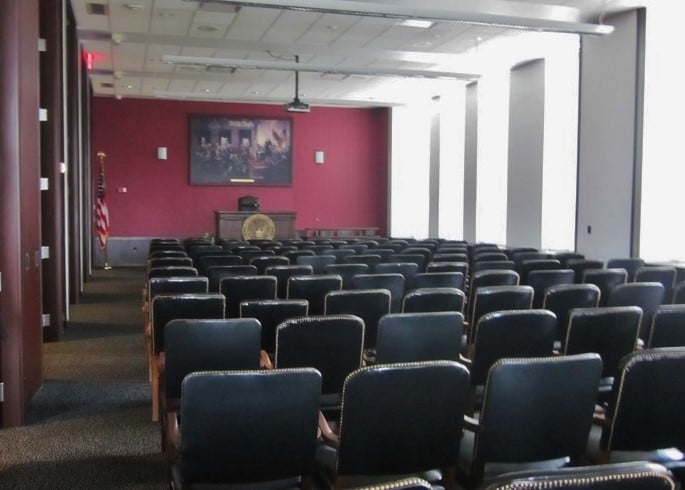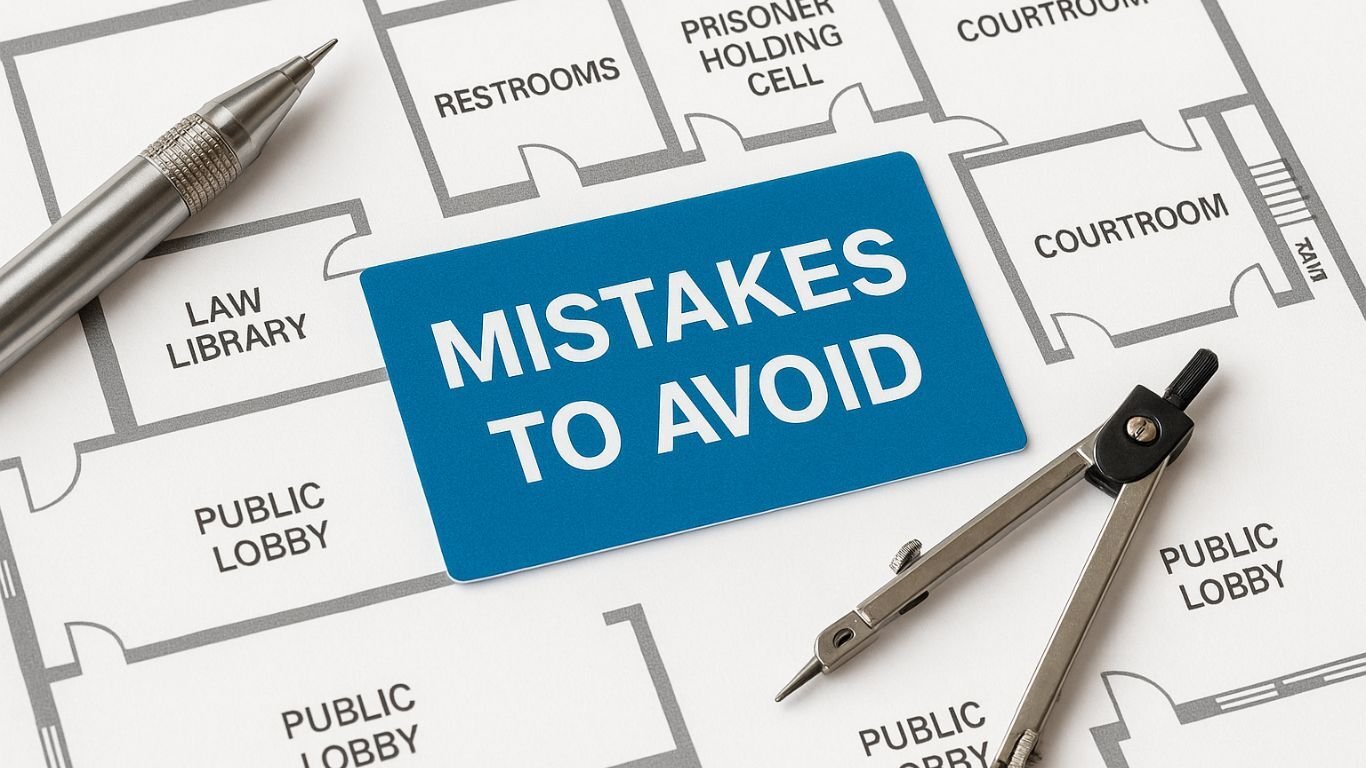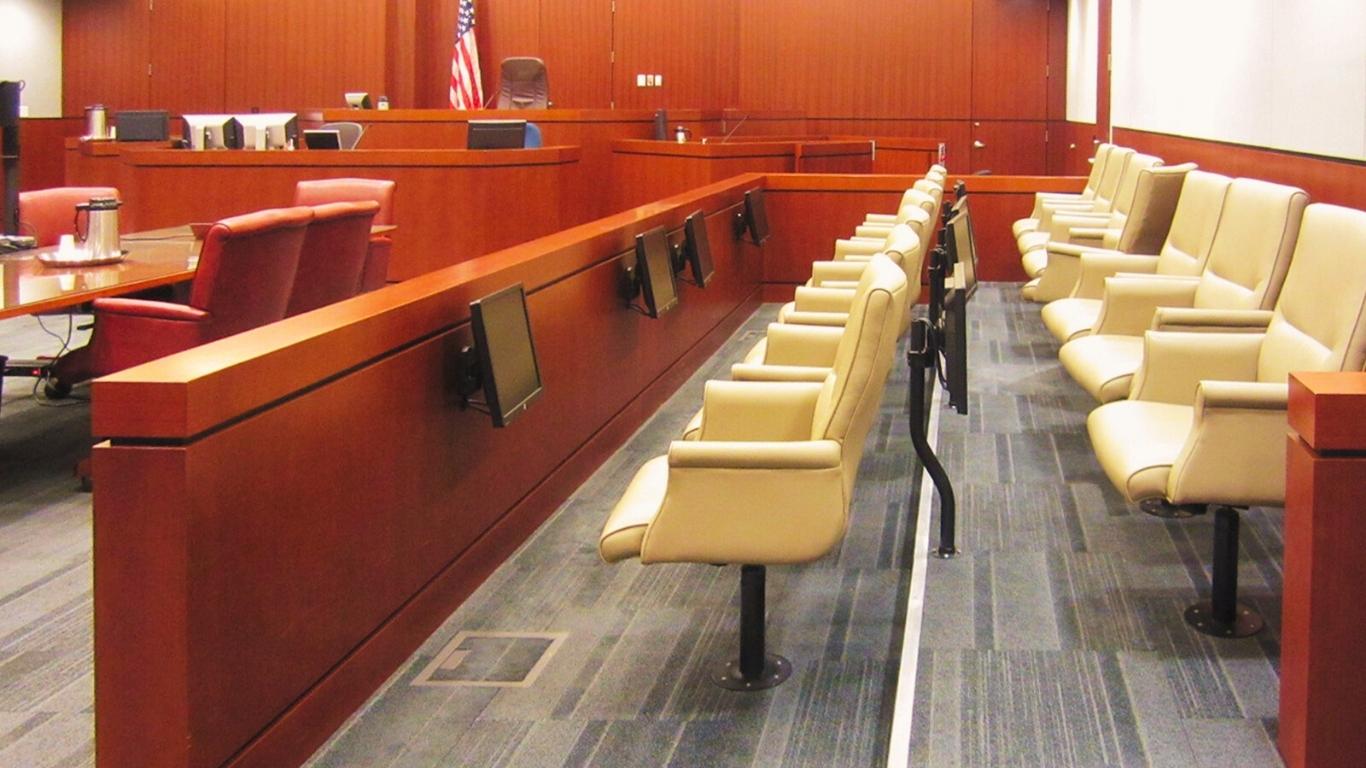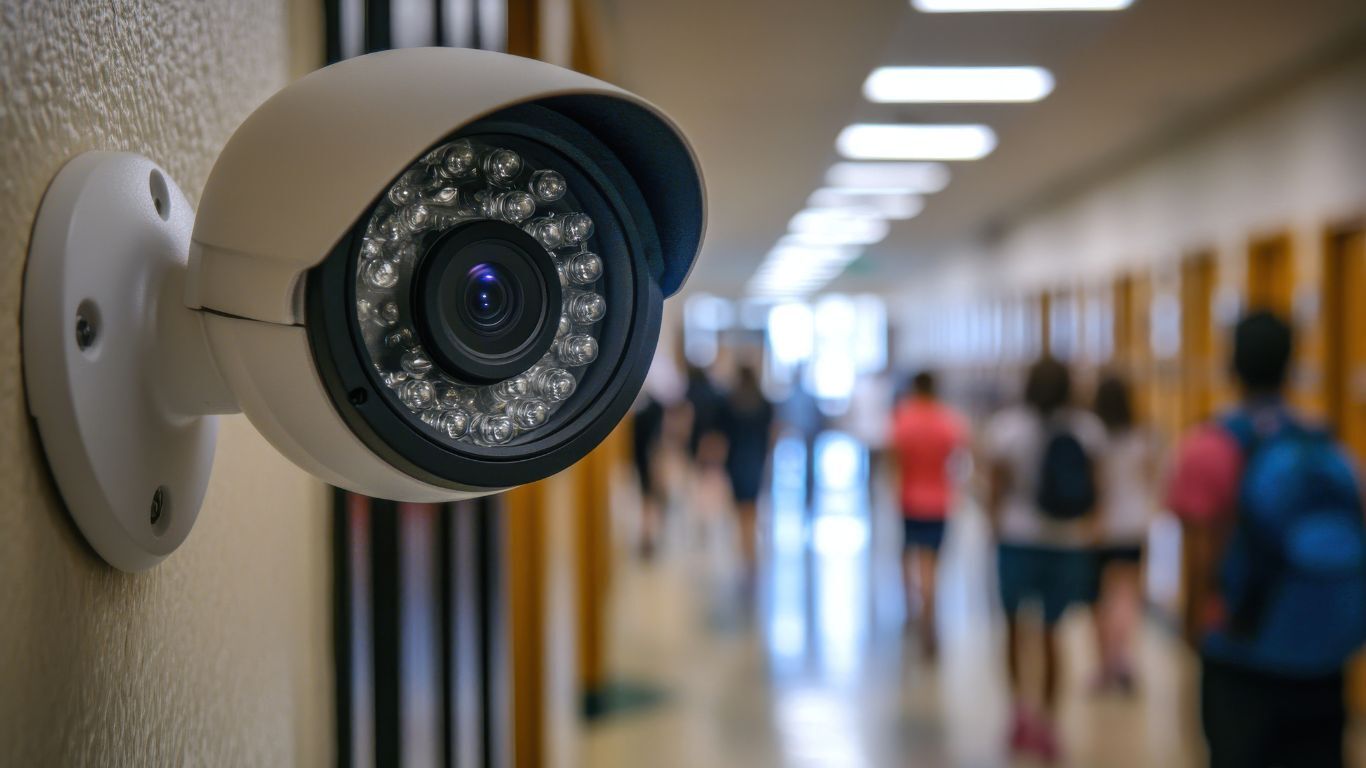Participation in a jury is the manner in which most Americans experience our judicial system. A much greater number of people serve on criminal and civil juries than experience the judicial system as plaintiffs, defendants, attorneys, or officers of the court. In fact, as of 2012, as many as 27% of all American adults have served on a jury. The jury needs to be considered during the courthouse planning process.
Prior to being selected to be empaneled for a jury, potential jury members must assemble at the courthouse in which they are scheduled to serve. They must initially check-in and then go through orientation before going to one of the courtrooms where selection of the specific jury members is conducted. This initial check-in and orientation process may extend over several hours.
As an introduction to the judicial system and to the jury participation activities that will follow, it is important that the check-in and orientation process make as positive an impression as possible on the prospective jurors.
Standards
To accommodate the jury assembly process, courthouses typically provide adequately sized and provisioned jury assembly rooms dedicated to this purpose. The jury assembly room shown in the photo above and in the plan below is one of the more complete facilities that I have seen. Courthouse standards normally require jury assembly rooms to have support facilities that include a check-in counter, comfortable seating, coat and personal property storage facilities, toilets, and a vending area. Though not usually a required standard, magazines and televisions are often provided to accommodate jurors during a long waiting period.
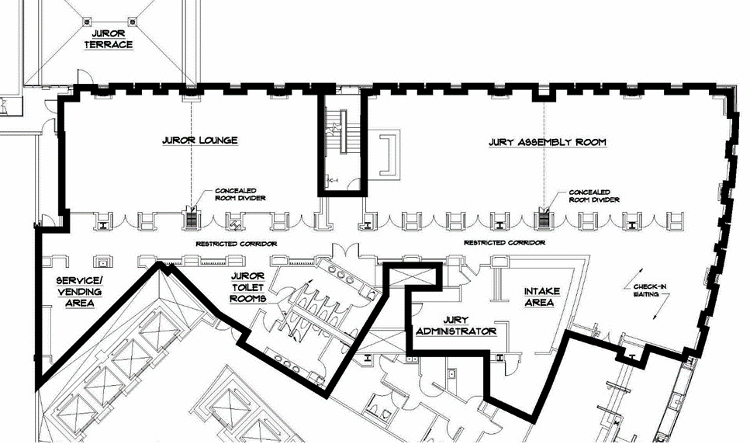
Jury Assembly Room Example

Jury Assembly Room Juror Computer Desks
But in many of the newer courthouses I visit, the jury assembly room provides a space that goes well beyond just meeting standards. In these examples, the court has seriously considered the jury assembly room as the prospective juror’s introduction to the judicial process and provided a space that honors the civic duty about to be performed. These rooms are spacious, well-furnished, and often have spectacular views of the surrounding cityscape. They are a focal point of the courthouse and sufficiently appealing to also be used for court-sponsored civic events.
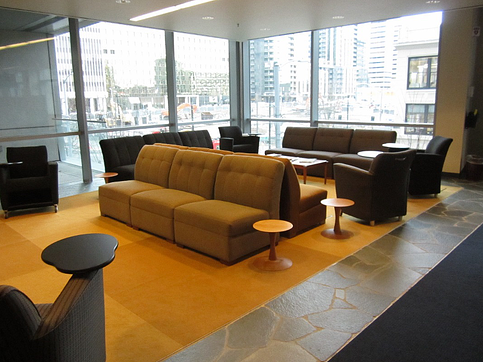
Jury Assembly Room Lounge Area
Limitations
Often, in a small courthouse with limited space, the spectator seating area in one of the courtrooms may be used for jury assembly purposes. In some cases, a jury deliberation room may be used. Neither is an ideal accommodation for prospective jurors. Courtrooms offer no support facilities and jury deliberation rooms are normally too small.
In fact, after many years of assessing courthouses, I have come to regard the jury assembly room as the courthouse’s most forgotten space. Granted, where this deficiency does occur, it is not by choice. Significant space limitations often force a court to choose between a jury assembly room and a more critical function such as a hearing room or judge’s chambers. In one court with critical space deficiencies, I even saw the public hallway in front of the clerk’s office used for jury assembly.
Given the fact that the jury assembly room serves as the introductory facility for the majority of the American public participating in the judicial system, it is disappointing to note that approximately 25% of the courthouses that we have assessed over the years do not have a dedicated jury assembly room. Additionally, of the 75% that do have a jury assembly area, approximately 60% of these received our lowest possible performance rating for providing adequate space and support facilities for the jurors.
Jury Assembly Alternatives
It is not reasonable to think that a court would choose to expand an existing courthouse or build a new one principally to correct a deficient jury assembly room. Still, there are alternative solutions that can be accomplished within the confines of an existing courthouse. Multi-purpose rooms, though they often require careful scheduling, are one example. Some of the multi-purpose rooms that I have seen used as an alternative for a dedicated jury assembly room include:
- Training Rooms. I have seen several large staff training rooms containing many of the previously noted support facilities that effectively serve the dual functions of training and jury assembly.
- Conference Rooms. Two courthouses that particularly impressed me used large, newly furnished court administrator conference rooms with adjacent support facilities for jury assembly purposes.
- Grand Jury Rooms. An older historic courthouse that I recently visited combined the grand jury function and the jury assembly function in a single, well-furnished shared room with more than adequate support facilities for either function assigned to the room at the time.
- Breakrooms. A courthouse that I visited with a particularly large and nicely appointed staff breakroom scheduled the space and its associated support facilities for morning jury assembly and switched its use to staff lunches at noon. I was particularly impressed that the highly precise scheduling worked perfectly and both the staff and the prospective jurors were well-served.
When courthouse conditions do not allow the opportunity to offer a dedicated jury assembly room, providing a creative alternative solution such as the ones described above is well worth the effort to make this first impression a positive experience for prospective jurors.



